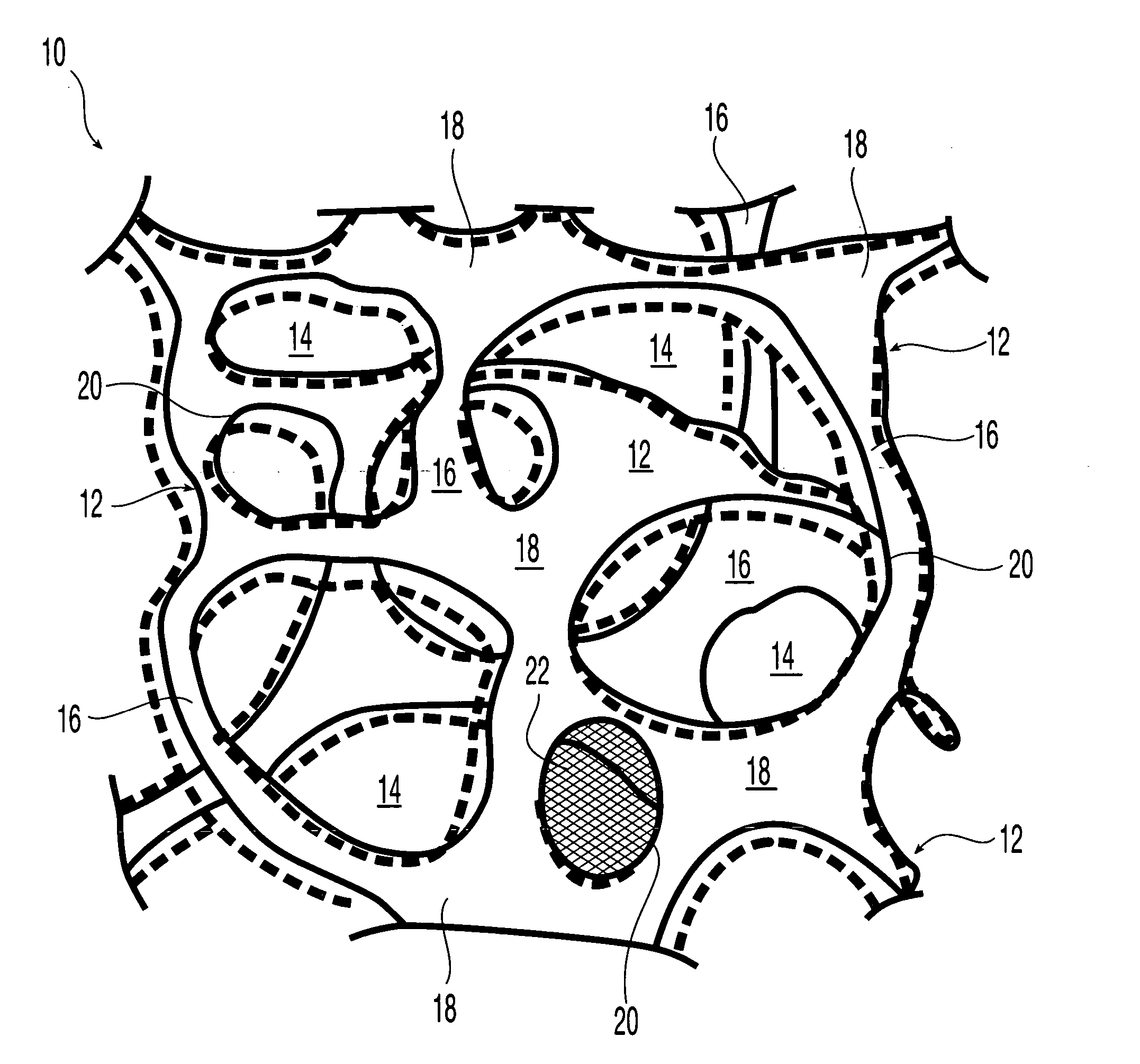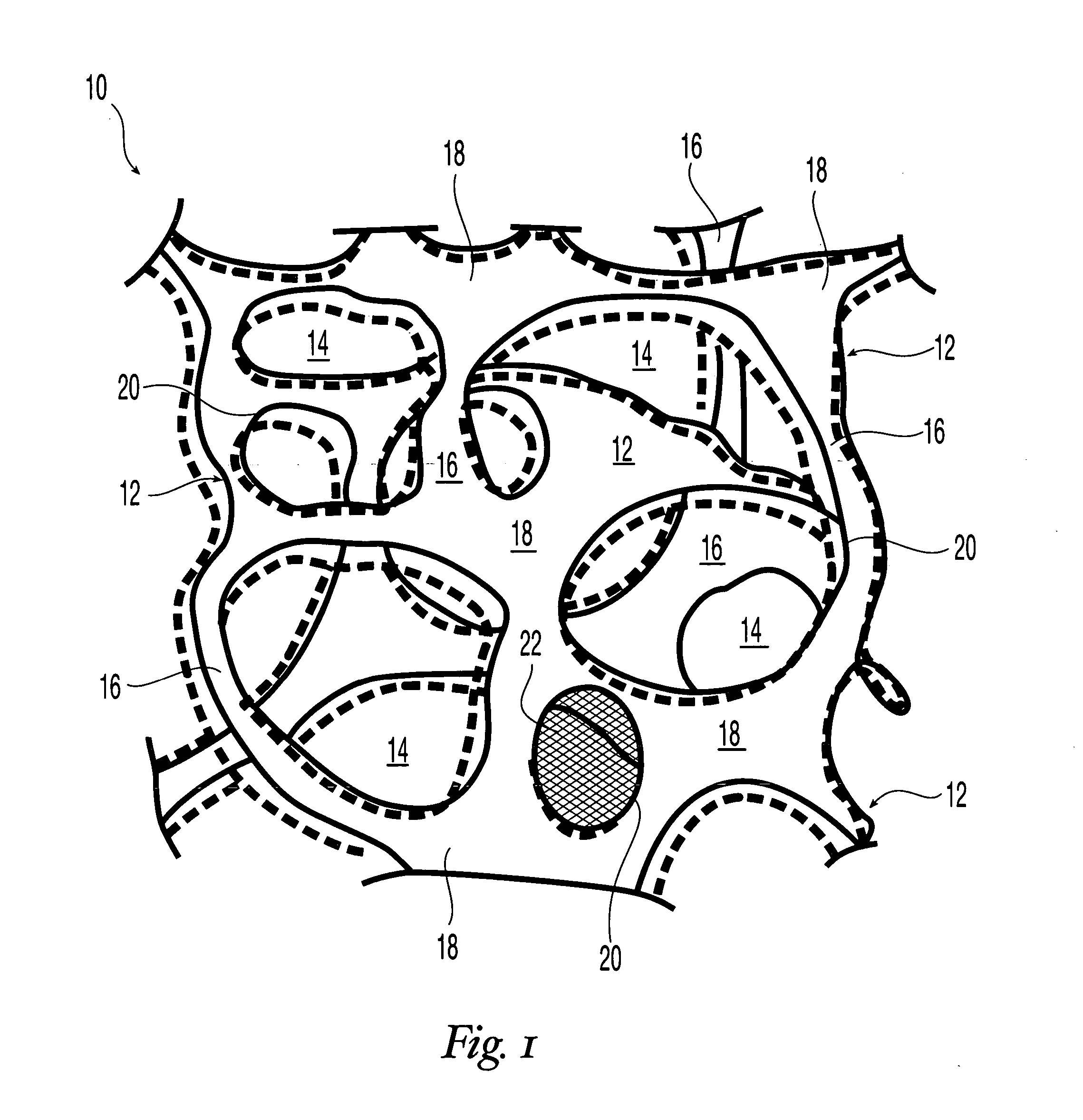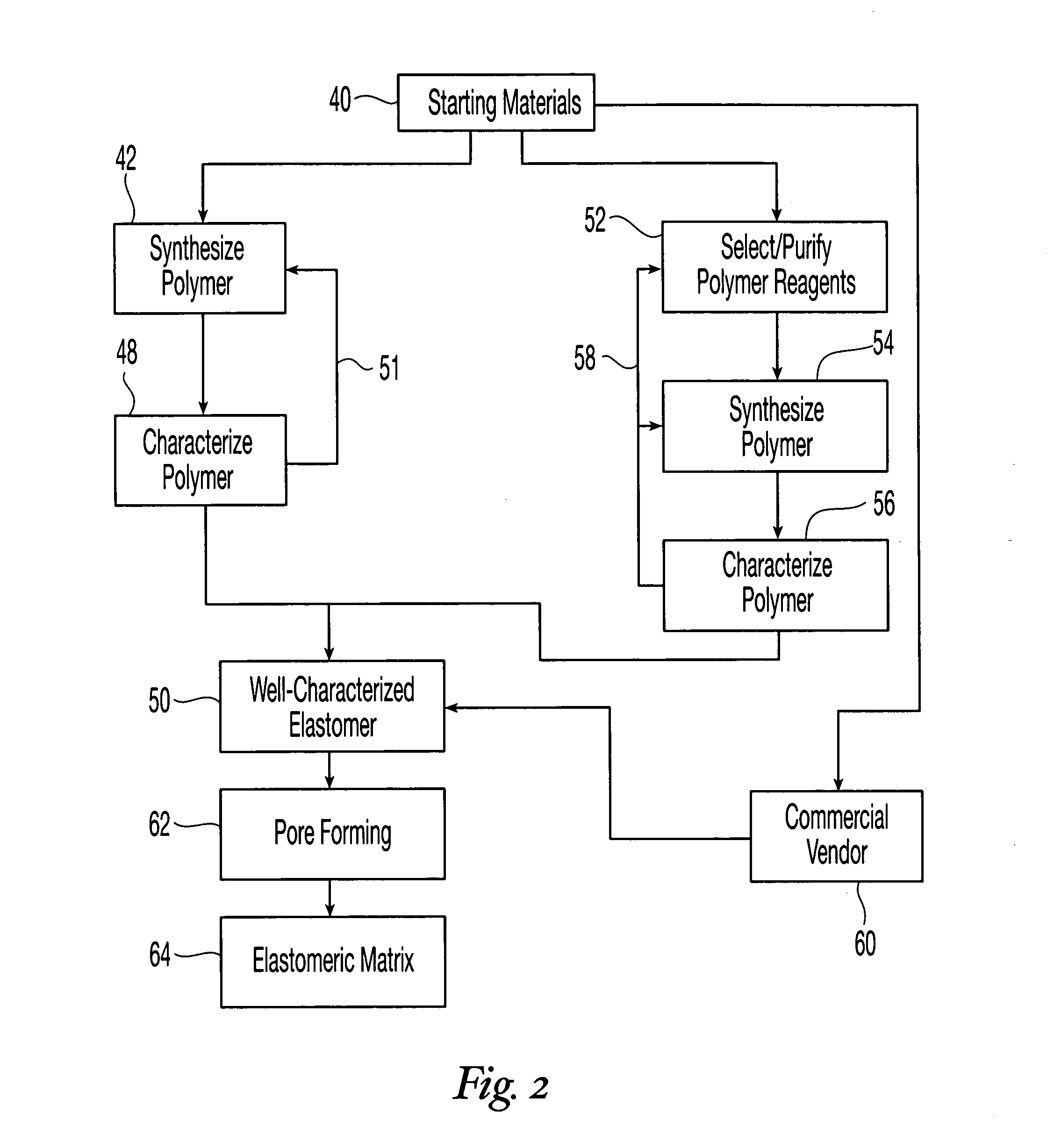Reticulated elastomeric matrices, their manufacture and use in implantable devices
a technology of elastomeric matrices and elastomeric matrices, which is applied in the field of reticulated elastomeric matrices, can solve the problems of limiting the ability of elastomeric matrices to serve as effective scaffolds, affecting the use of implants, and lack of mechanical properties, etc., to achieve the effect of remarkable flexibility and potential us
- Summary
- Abstract
- Description
- Claims
- Application Information
AI Technical Summary
Benefits of technology
Problems solved by technology
Method used
Image
Examples
example 1
Fabrication of a Crosslinked Polyurethane Matrix
The aromatic isocyanate RUBINATE 9258 (from Huntsman) was used as the isocyanate component. RUBINATE 9258 is a liquid at 25° C. RUBINATE 9258 contains 4,4′-MDI and 2,4′-MDI and has an isocyanate functionality of about 2.33. A diol, poly(1,6-hexanecarbonate) diol (POLY-CD CD220 from Arch Chemicals) with a molecular weight of about 2,000 Daltons was used as the polyol component and was a solid at 25° C. Distilled water was used as the blowing agent. The blowing catalyst used was the tertiary amine triethylenediamine (33% in dipropylene glycol; DABCO 33LV from Air Products). A silicone-based surfactant was used (TEGOSTAB® BF 2370 from Goldschmidt). A cell-opener was used (ORTEGOL®501 from Goldschmidt). The viscosity modifier propylene carbonate (from Sigma-Aldrich) was present to reduce the viscosity. The proportions of the components that were used is given in Table 2.
TABLE 2IngredientParts by WeightPolyol Component100Viscosity Modif...
example 2
Reticulation of a Crosslinked Polyurethane Foam
Reticulation of the foam described in Example 1 was carried out by the following procedure. A block of foam measuring approximately 15.25 cm×15.25 cm×7.6 cm (6 in.×6 in.×3 in.) was placed into a pressure chamber, the doors of the chamber were closed, and an airtight seal to the surrounding atmosphere was maintained. The pressure within the chamber was reduced to below about 100 millitorr by evacuation for at least about 2 minutes to remove substantially all of the air in the foam. A mixture of hydrogen and oxygen gas, present at a ratio sufficient to support combustion, was charged into the chamber over a period of at least about 3 minutes. The gas in the chamber was then ignited by a spark plug. The ignition exploded the gas mixture within the foam. The explosion was believed to have at least partially removed many of the cell walls between adjoining pores, thereby forming a reticulated elastomeric matrix structure.
The average pore...
example 3
Fabrication of a Crosslinked Polyurethane Matrix
The components used were the same as described in Example 1. The proportions of the components that were used is given in Table 4.
TABLE 4IngredientParts by WeightPolyol Component100Viscosity Modifier5.80Surfactant1.10Cell Opener1.00Isocyanate Component62.42Isocyanate Index1.00Distilled Water3.39Blowing Catalyst0.53
The polyol component was liquefied at 70° C. in a circulating-air oven, and 100 g thereof was weighed out into a polyethylene cup. 5.8 g of viscosity modifier was added to the polyol component to reduce the viscosity and the ingredients were mixed at 3100 rpm for 15 seconds with the mixing shaft of a drill mixer to form “Mix-1”. 1.10 g of surfactant was added to Mix-1 and the ingredients were mixed as described above for 15 seconds to form “Mix-2”. Thereafter, 1.00 g of cell opener was added to Mix-2 and the ingredients were mixed as described above for 15 seconds to form “Mix-3”. 62.42 g of isocyanate component was adde...
PUM
| Property | Measurement | Unit |
|---|---|---|
| Temperature | aaaaa | aaaaa |
| Fraction | aaaaa | aaaaa |
| Fraction | aaaaa | aaaaa |
Abstract
Description
Claims
Application Information
 Login to View More
Login to View More - R&D
- Intellectual Property
- Life Sciences
- Materials
- Tech Scout
- Unparalleled Data Quality
- Higher Quality Content
- 60% Fewer Hallucinations
Browse by: Latest US Patents, China's latest patents, Technical Efficacy Thesaurus, Application Domain, Technology Topic, Popular Technical Reports.
© 2025 PatSnap. All rights reserved.Legal|Privacy policy|Modern Slavery Act Transparency Statement|Sitemap|About US| Contact US: help@patsnap.com



